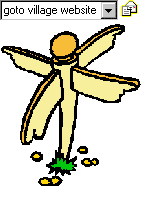
|
Now The Woodman's Life
In the Spring of the year I would help Mr. Gow, the Head Forester, to measure a section of wood. The timber was put into three grades. We made our estimation and valuation and the work was then put out to tender, the best offer getting the parcel. It had to be felled and removed and the land left clean and tidy, all by a set date, so that we could replant again through the Autumn and Winter. The planting season over then we would move the seedlings from the seed beds to transplant in lines, giving the plant more room to grow, and get a better root system. Sometimes they were planted on to very poor soil which was a bit of a shock for them. All replanted woodland and New Woods and Shelter Belts were fenced in to keep the rabbits and deer out. At the end of the planting season a Forester from the Commission would come round and inspect the newly planted woods and then come again three years later, to give the OK for the grant, if it was in good condition. When Mr. Gow retired in '69, during his time as Head Forester he had seen 1,000,000 trees planted on the Estate. At that time the labour force was about twenty, and after Harvest and the Sugar Beet harvest was over, the spare farm hands joined the Woods Department through the Winter and then quite often, the department was up to thirty-five men. In January 1970, Mr. Harrison asked me to take the Foreman's job. One of my first jobs was to fell a Cupressus Macrocarpa in his garden, a multi-topped tree. I cut them off in one and lowered them down on a rope. Next came the branches until I had a thirty foot stem left, which we felled onto sleepers on the lawn. The family watched from the windows all morning and at the end of the day Mr. Harrison thanked me for a good job done. Now Arthur Gough was Head Forester and I had quite few jobs like this, but I enjoyed doing them and I liked the challenge. With Dutch Elm disease killing off many of the elms in the Park and roadside,
and Watermark disease in the willows at Wangford, and the gale of '87 we were
kept busy. Apart from our everyday work many young plantations needed brashing A Forestry expert came from Yorkshire to inspect two woodlands, Beech Avenue and Cranhouse Belt. We had just thinned them out. They looked at Cranhouse but didn't make any comment about it, but they awarded a Silver Medal to the Estate for the Good Management of Beech Avenue. Christmas Tree sales began to pick up. The first thirty foot tree being bought by Sudbury Town Council. With many more to follow. The sale of smaller trees built up quite quickly and from mid-November life got a bit hectic, working seven days a week, but it was our Harvest so we made the most of it. Come Christmas you felt like a long lie in, but when you get up to a good cup of tea with added 'vitamins' the day seemed so much nicer! So this was the way it was. But new ideas and new working ways were coming in. Polytunnels assisting the propagation of pine and spruce seed, and any unusual seed that might help to make a sale. The shearing of Norway Spruce and Scots Pine to make conical trees, improving the quality all the time. Jim Rudderham became Head Forester and is still in charge of the Forestry Department. The year '91 and I have asthma and decide to call it a day and hang up my chain saw. At times it was all a bit frightening but for all that I would not have changed it. ©2000 Dennis Reeder
|
|
A Forest Heath District Council (Suffolk) Project supported by the Heritage Lottery Fund as part of the Millennium Festival ©2000 Designed by ArtAtac |